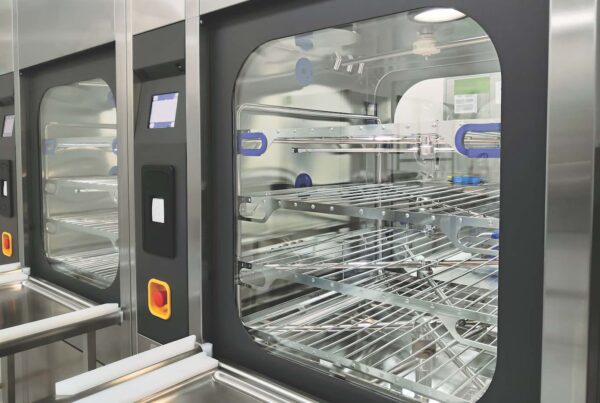Introduction
This large southeast rural health system operates eight hospitals, with all but one offering surgical services, in a challenging environment characterized by poverty, underdeveloped infrastructure, high unemployment, and a less healthy population. Following a sentinel event at one of these hospitals, Surgical Directions’ consulting team was engaged to conduct assessments at all eight hospitals and implement solutions at two key facilities.
Problem
The facilities within the system were experiencing rapid leadership turnover and lacked strong leadership, resulting in a negative workplace culture, low morale, surgeon attrition, and high clinical staff turnover. This environment compromised the quality and safety of patient care. In response to a sentinel event, committed members of the health system sought guidance from Surgical Directions, recognizing the need for change and the potential for improvement with the right tools and resources.
Solutions
Surgical Directions collaborated with this health system to identify barriers to safe and effective patient care. After a comprehensive assessment of all eight facilities, our team focused on key areas for improvement, including leadership, governance changes, and quality and safety enhancement strategies.
1 | System-Wide Improvement
Our team adopted a systemic approach, assessing all hospitals to understand individual challenges and systemic issues. By establishing a trusted baseline through an executive strategy session with their clinical and administrative leadership, we developed a plan for implementing specific solutions while identifying opportunities for system-wide enhancements.
2 | Leadership to Drive Change
Inexperienced and inconsistent leadership, from the C-suite to the operating room, was identified as a primary issue. To address this, we identified change agents within the organization who could drive improvement. Our team worked closely with these dedicated professionals, enabling them with the tools and direction needed for effective leadership. The interim chief medical officer played a pivotal role in initiating corrective action and establishing a process for long-term change.
3 | Staffing Decisions that Build Trust
In some cases, staff and leaders who hindered progress were removed. Surgeons and physician staff were held to the same standards as the clinical workplace underwent significant cultural changes. Our evaluation led to the recognition of untapped potential in one surgical leader, who, with empowerment, resources, and management support, became a highly effective clinical educator and director.
4 | Standards Set through Formal Governance
Governance was redefined to foster collaboration and improve decision-making power. The health system embraced projects to enhance patient preparedness and care continuity through evidence-based medicine. Patients were no longer scheduled for surgery without proper evaluation to ensure appropriate treatments for their conditions and general health.
Results
The health system’s commitment to improvement has yielded tangible results.
- Primetime utilization improved 6% at hospital 1 and 12% at hospital 2
- FCOTS improved by an impressive 65% at hospital 1 and 21% at hospital 2
- Both facilities saved 3,000+ minutes in turnover time
Cultural revitalization extends to the surgeon level, streamlining anesthesia services to one provider group. Areas such as sterile processing, often overlooked, have been evaluated and enhanced. Training and certifications have reduced error rates and increased the number of trained professionals in the sterile processing department.
Operational Improvements Data
Primetime Adjusted Facility Utilization
Show the improvement in overall primetime adjusted facility utilization.
Time Periods Compared: 2022 vs. 2023 (Partial)
Facility | 2022 | 2023 (Partial) | Improvement |
Hospital 1 | 49% | 55% | 6% |
Hospital 2 | 47% | 59% | 12% |
First Case On Time Start Improvement
Show the difference between the lowest and highest performing month for FCOTS.
Time Periods Compared: 2022 vs. 2023 (Partial)
Facility | Low | High | Delta |
Hospital 1 | 51% | 72% | 21% |
Hospital 2 | 18% | 83% | 65% |
Hospital 1 FCOTS – Low: Jan 2022 @51%; High: Dec 2022 @72%
Hospital 2 FCOTS – Low: Jan 2022 @18%; High: Oct 2022 @83%
Turnover Improvement
For the top 10 service lines with the most turnover volume, how many showed an improvement in average turnover time? (Comparing 2022 to 2023 Partial)
Time Periods Compared: 2022 vs. 2023 (Partial)
Category | Hospital 1 | Hospital 2 |
No. Showing Improvement | 4 | 8 |
Avg. Turnover Improvement/ Case (min) | -3.5 | -3.88 |
Est. Minutes Saved (YTD 2023) | 3887 | 3403 |
Conclusion
This large southeast rural health system exemplifies effective strategies for achieving positive change even in challenging circumstances. Determined leadership and interdisciplinary governance have driven surgical services optimization. Comparing metrics at the outset with current KPIs underscores the value of an external perspective in perioperative services working alongside a committed health system, regardless of its initial challenges.



